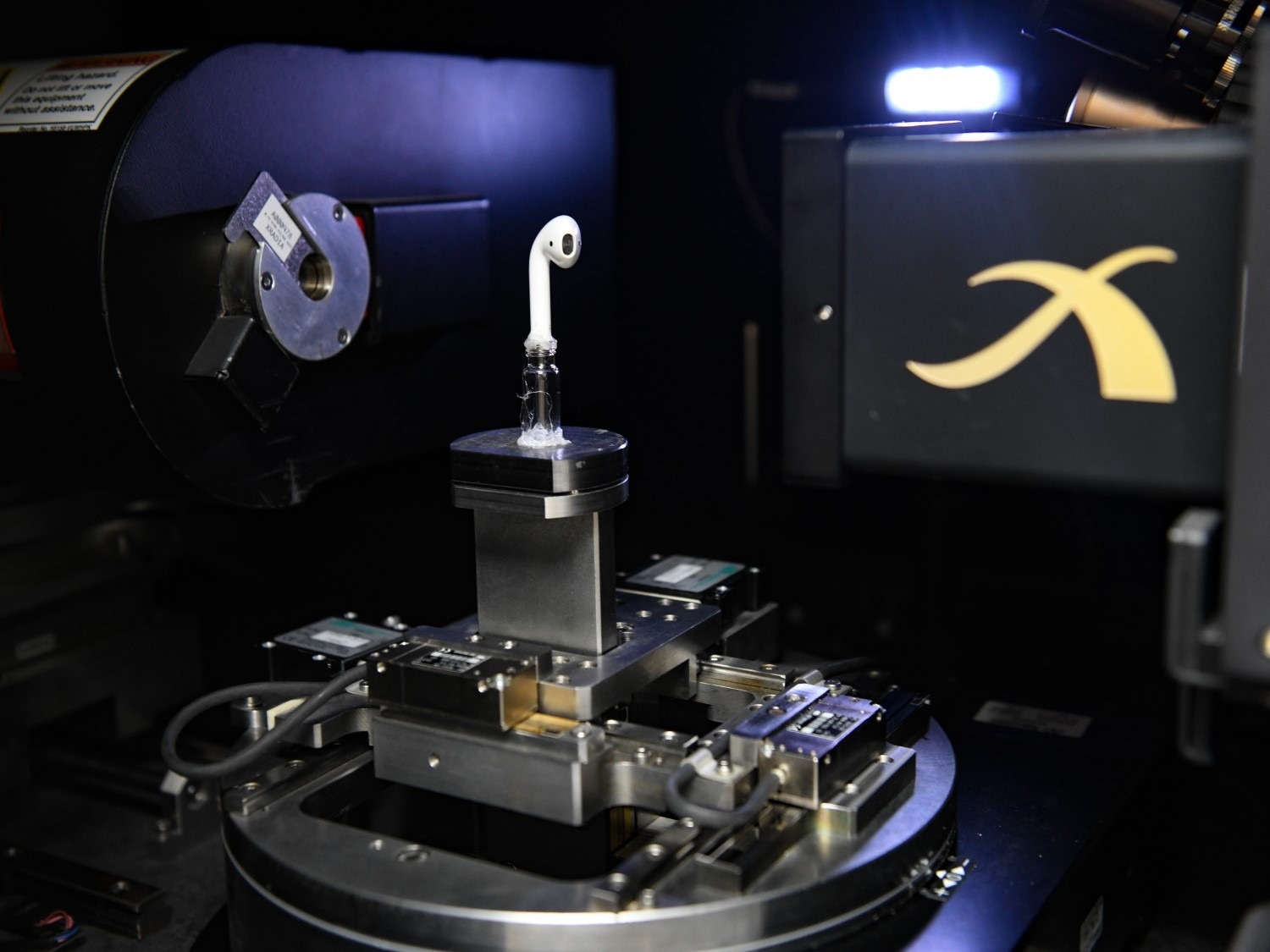Reviewed by Lexie CornerFeb 5 2025
An international research team led by The University of Texas at Austin investigated battery degradation using a novel approach. Their findings were published in Advanced Materials.

Image Credit: The University of Texas at Austin
Battery performance declines over time, particularly in compact consumer electronics such as wireless earbuds. To investigate the underlying causes, a research team used X-ray, infrared, and other imaging techniques to analyze battery behavior in these devices.
This started with my personal headphones; I only wear the right one, and I found that after two years, the left earbud had a much longer battery life. So, we decided to look into it and see what we could find.
Yijin Liu, Associate Professor, Walker Department of Mechanical Engineering, Cockrell School of Engineering, The University of Texas at Austin
They identified interference from other components, including the Bluetooth antenna, microphones, and circuitry, which created a localized microenvironment affecting battery performance. This interference led to a temperature gradient between the top and bottom of the battery, contributing to degradation.
Environmental exposure further influences battery performance. While batteries are designed to withstand various conditions, frequent fluctuations in temperature, air quality, and other external factors introduce additional stress.
The study highlights the need to consider battery integration within real-world devices such as smartphones, laptops, and electric vehicles. Optimizing packaging and design to minimize interactions with surrounding components could improve battery longevity and reliability.
Using devices differently changes how the battery behaves and performs. They could be exposed to different temperatures; one person has different charging habits than another, and every electric vehicle owner has their own driving style. This all matters.
Guannan Qian, Study First Author and Postdoctoral Researcher, The University of Texas at Austin
The research was conducted in collaboration with the UT Fire Research Group, led by mechanical engineer Ofodike Ezekoye. The team used infrared imaging technology alongside laboratory X-ray imaging at UT Austin and Sigray Inc. Additionally, they utilized synchrotron X-ray facilities to capture a comprehensive view of battery behavior.
Most of the time, in the lab, we are looking at either pristine and stable conditions or extremes. As we discover and develop new types of batteries, we must understand the differences between lab conditions and the unpredictability of the real world and react accordingly. X-ray imaging can offer valuable insights for this.
Xiaojing Huang, Physicist, Brookhaven National Laboratory
Future research will extend to larger battery cells used in phones, laptops, and electric vehicles to further analyze performance.
The research team included Tianxiao Sun and Ayrton M. Yanyachi of the Walker Department of Mechanical Engineering; Guibin Zan, Jizhou Li, Dechao Meng, Vivek Thampy, Sang-Jun Lee, Jun-Sik Lee, and Piero Pianetta of SLAC; Sheraz Gul and Wenbing Yun of Sigray; Xiaojing Huang, Hanfei Yan, and Yong S. Chu of Brookhaven National Laboratory; Juanjuan Huang and Shelly D. Kelly of Argonne National Laboratory; Peter Cloetens of ESRF; and Kejie Zhao of Purdue University.
The study was conducted in collaboration with SLAC National Accelerator Laboratory’s Stanford Synchrotron Radiation Lightsource, Brookhaven National Laboratory's National Synchrotron Light Source II, Argonne National Laboratory’s Advanced Photon Source, and the European Synchrotron Radiation Facility (ESRF) in France. These facilities provided access to high-resolution synchrotron imaging, enabling detailed analysis of battery behavior under real-world conditions.
Journal Reference:
Qian, G., et. al. (2025) In-device Battery Failure Analysis. Advanced Materials. doi.org/10.1002/adma.202416915